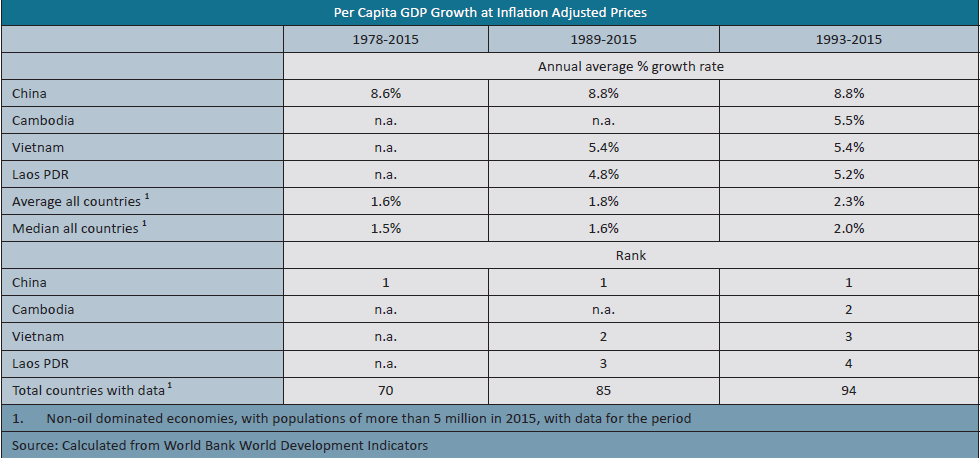By JOHN ROSS
By JOHN ROSS
CHINA has followed an economic development strategy, as analyzed below, that is radically different from the neo-liberal “Washington Consensus” advocated by the IMF. The latter is the dominant development strategy advocated by capitalist countries. This article therefore factually compares the results of what will be termed China’s “socialist development strategy” versus the Washington Consensus.

John Ross is a senior research fellow at Chongyang Institute for Financial Studies, Renmin University of China. From 2000 to 2008 he was director of economic and business policy in the administration of Mayor of London Ken Livingstone. He previously served as adviser to several major international mining, finance and equipment manufacturing companies.
The reasons for making such a factual comparison are clear. The basis of any serious or scientific analysis is that if facts and theory do not coincide it is the theory that has to be abandoned, not the facts suppressed. This is equally expressed in the Chinese dictum “seek truth from facts.” Anti-scientific “dogmatism” consists of clinging to a theory even when the facts contradict it.
Despite this requirement for factual study, supporters of the Washington Consensus appear to dislike making systematic factual comparisons of the two development approaches. The reasons for this will become evident from the data below. This shows that China’s “socialist development strategy” far outperforms the Washington Consensus. The emphasis placed by China on development strategy and its socialist orientation has obvious implications for other countries.
The term “Washington Consensus” was first coined in 1989 by U.S.-based economist John Williamson – although the actual practical policies were commenced in the late 1970s/early 1980s. The Washington Consensus is a classic form of neo-liberalism. It advocates in terms of economic policy privatization and minimization of the state’s economic role. Its social policy may be described as “trickle down” – a belief that if there is economic growth all layers of society will automatically benefit as the benefits “trickle down” from the richest to poorest. Legally the Washington Consensus states that the overriding goal is the strongest guarantee of private property. Politically, although claiming to be neutral, this combination of policies evidently favours capitalist and conservative political parties.
China’s “socialist development strategy,” which commenced with its 1978 economic reforms, is radically different in its entire framework, and directly counter-posed on key policy issues. China used, in Xi Jinping’s phraseology on economic policy, both the “visible” and the “invisible hand” – not simply the private sector but also the state. Indeed, in China itself, as the Communiqué of the Third Plenary Session of the 18th Central Committee of the CPC stated: “We must unswervingly consolidate and develop the public economy, persist in the dominant position of public ownership, give full play to the leading role of the state-owned sector.”
In social policy China, in line with its socialist approach:
What, therefore, were the factual outcomes of these two radically different approaches to economic development? To assess this, for reasons which will become evident from the statistics, not only will China itself be analyzed but three other countries also considered. These are Vietnam, which defines itself as socialist and which in reality drew heavily from China’s “socialist market economy” approach, Cambodia, and the Lao People’s Democratic Republic – the latter two also highly influenced by China’s development model.

The facts are summarized in Table 1 which shows the annual average rate of per capita GDP growth to 2015 from 1978, when China began its economic reforms, from 1989, when the Washington Consensus was put forward, and from 1993, when data for Cambodia becomes available.
The data is of course extremely striking – indeed conclusive. From 1993 to 2015, when availability of data allows all four countries to be analyzed, China, Cambodia, Vietnam, and Laos ranked respectively first, second, and third, and fourth in world per capita GDP growth. Peripheral cases of countries with populations of less than five million or dominated by oil production are not included. From 1989, the year of the putting forward of the Washington Consensus, to 2015, China, Vietnam and Laos ranked respectively first, second, and third in the world as regards per capita GDP growth. From 1978 onwards China ranked first among all economies in terms of economic growth.
The degree to which economies influenced by the China development model outgrew the world average was huge. From 1978 onwards China’s rate of growth was almost six times the world average. Since 1989 China again grew almost six times as fast as the world average while Vietnam and Laos grew over three times as fast.
The contrasts not only of average per capita GDP growth but of eradication of poverty were overwhelming. From 1981 China lifted 728 million people out of World Bank-defined poverty. Another socialist country, Vietnam, lifted over 30 million from poverty by the same criteria. The whole of the rest of the world, in which the dominant model advocated by the IMF was the Washington Consensus, lifted only 120 million people out of poverty. In summary, 83 percent of the reduction of the number of those living in poverty occurred in China, and 85 percent in socialist countries. Only 15 percent of the reduction in number of those living in poverty occurred in capitalist countries.
This data, of course, also refutes the claim that capitalism and free market policies produced rapid economic growth and poverty reduction. If capitalism were the motor of rapid economic growth and poverty reduction, then this growth should be fastest and poverty reduction greatest in capitalist countries. Instead it is in socialist China and socialist Vietnam that the greatest poverty reduction has taken place. Socialist China and socialist Vietnam, together with the countries they influence, Cambodia and Laos, also saw the fastest economic growth.
The success of China’s conscious development policies is crucial to world economic growth. This is particularly true in the difficult slow-growth global economic conditions following the international financial crisis – accurately described as the “new mediocre.” Economic development remains the most fundamental issue for the overwhelming majority of the world’s population. According to the latest World Bank data, 84 percent of the world’s population lives in developing countries.
The facts of world economic development show that China’s development policies that include a key role for the state sector, clear urbanization policies, large-scale conscious policies to eradicate poverty, and a socialist political orientation were most successful in producing both economic growth and poverty reduction. This has clear implications for the world economy.
The simple but decisive fact that the world’s first, second, third, and fourth most rapidly growing economies all use the “China socialist development model” is a factual demonstration of its superiority to any alternative approach – and in particular to the Washington Consensus.